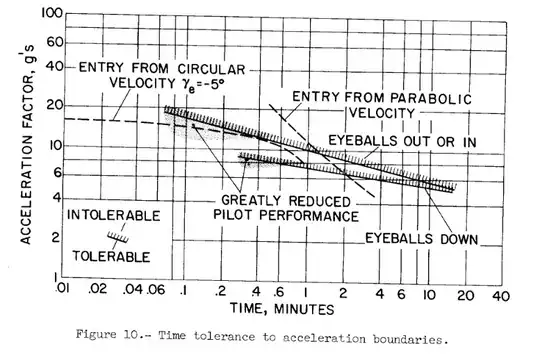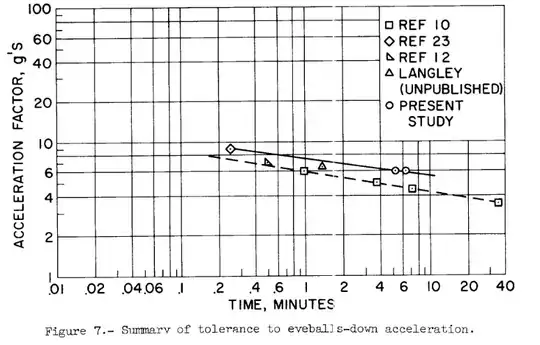Making a planet habitable for humanoids: The planet
I put a small section in there on G-forces. Orientation is VERY important, some humans can handle up to 45Gs for short periods of time if they're positioned correctly (eyeballs in/on their back - heart-brain same level, spine supported, etc). Vibration is important too. If you're at the wrong frequency even low levels of extra G can be incredibly harmful. If this is a shuttle, and you've got your humans in cradled seats, properly oriented - then you can get a lot more out of them, than say fighter pilots, who experiences jerks, and turns - instead of being correctly oriented to the thrust axis.
6Gs are handled for something like 10m; because you can only handle 10G for around 1m.
I'd guess a maximum of somewhere around 2G sustained for the 8 hours you're specifying (I don't think anyone has ever had the opportunity to test that duration, much less get us some type of average). And this wouldn't be halfway pleasant at all.
I think if you're launching from the surface of a planet/gravity well, you're going to want to vary the thrust. A lot at the beginning, then give the humans a break, then go into a constant-sustained thrust regime. A lot of thrust, quickly will get you out of a gravity well, whereas lower thrust will take a lot longer to get you a smaller distance - depending on the technology, obviously.
Of course this is going to be some near-magic technology you've got going on, as keeping that much thrust going for that long is difficult - 90% of a rocket's mass is propellant, and we've never done a SSTO. Easier to drop engines after use than to deal with complexities of different thrust needs. And you burn most of that within the first 2m30s (for the shuttle).
Most rockets only burn at lift-off around 1+0.3G to sometimes 1+0.6G, because of engine-scale, etc. Which seems wasteful, as the longer you're in the gravity well, the more you've got to burn just to stay even.

